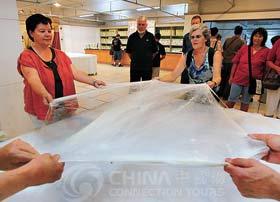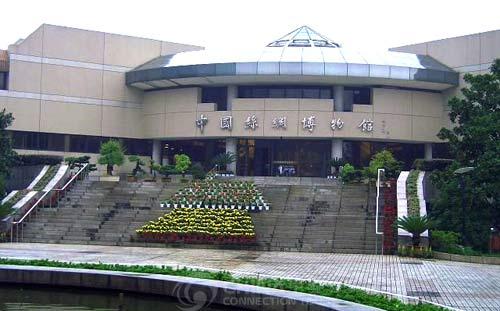 Silk production in China has a history of 6,000 years. As early as the fifth century B.C., silk was exported to Asia, Europe and Africa along the Old Silk Road, making an outstanding contribution to world civilization. Suzhou has been a silk producer for centuries, and China's first silk museum was built in this ancient city.
Silk production in China has a history of 6,000 years. As early as the fifth century B.C., silk was exported to Asia, Europe and Africa along the Old Silk Road, making an outstanding contribution to world civilization. Suzhou has been a silk producer for centuries, and China's first silk museum was built in this ancient city.
Suzhou Silk Museum is multi-functional, and combines exhibits with demonstrations of silk weaving. Exhibits on display in its various exhibition halls reflect the origin, evolution and development of silk production, from primitive times to the Shang, Zhou, Han, Sui, Tang, Song, Yuan, Ming and Qing dynasties right through to present day. Among the exhibits are 80 traditional silk looms, 320 fragments of silk from various dynasties, 30 bolts of ancient silk, 350 ancient garments, and a large number of samples of modern silk products.
In the Introductory Hall there is a large relief sculpture depicting a camel caravan. It is reminiscent of the Old Silk Road, the road on which the earliest Eastern and Western exchanges took place, surrounded by vast deserts, traversed by camel caravans, site of mystical stone grottoes, ancient temples, and magnificent passes...
The other exhibition halls, as well as displaying choice cultural relics, also contain a silkworm breeding and rearing room, and a silk weaving workshop. The silkworm rearing room simulates a farmhouse in southern China, in which thousands of silkworms eat mulberry leaves. Through the windows can be seen a grove of mulberry trees, the whole tableau thereby indicating the origins of China's sericulture.
The silk weaving workshop is where demonstrations of traditional silk weaving technology are held. Some artisans work on traditional looms to produce various silk products, such as cloud brocades, Song brocades and velvet, and demonstrate the technique of hand-operated silk reeling. They enact the main procedures which ancient silk production entailed.
In the museum there is also a "Ming and Qing Street," lined with replicas of time-honored silk shops in Suzhou, showing the important position of silk in the local economy. Since its founding in 1991, the museum has attracted numerous visitors from home and abroad.

